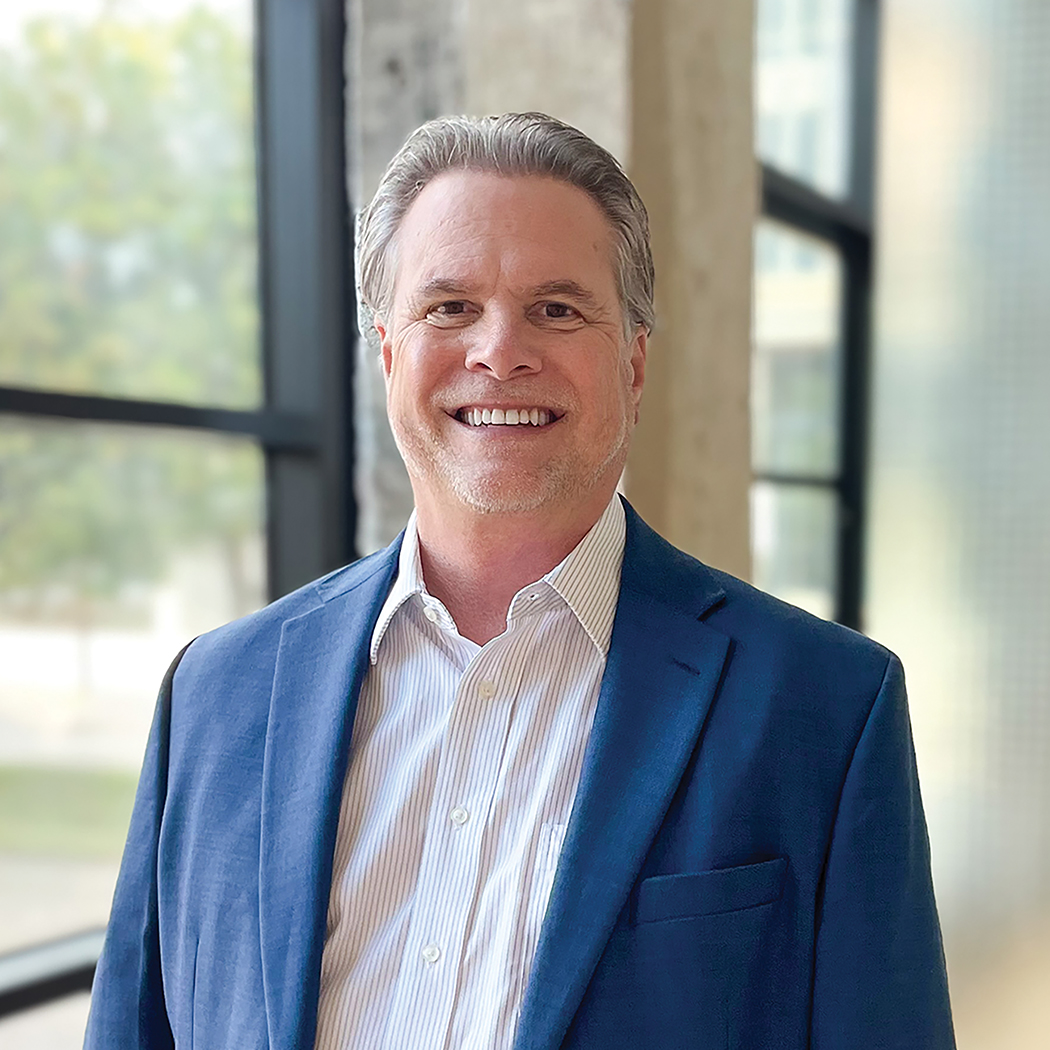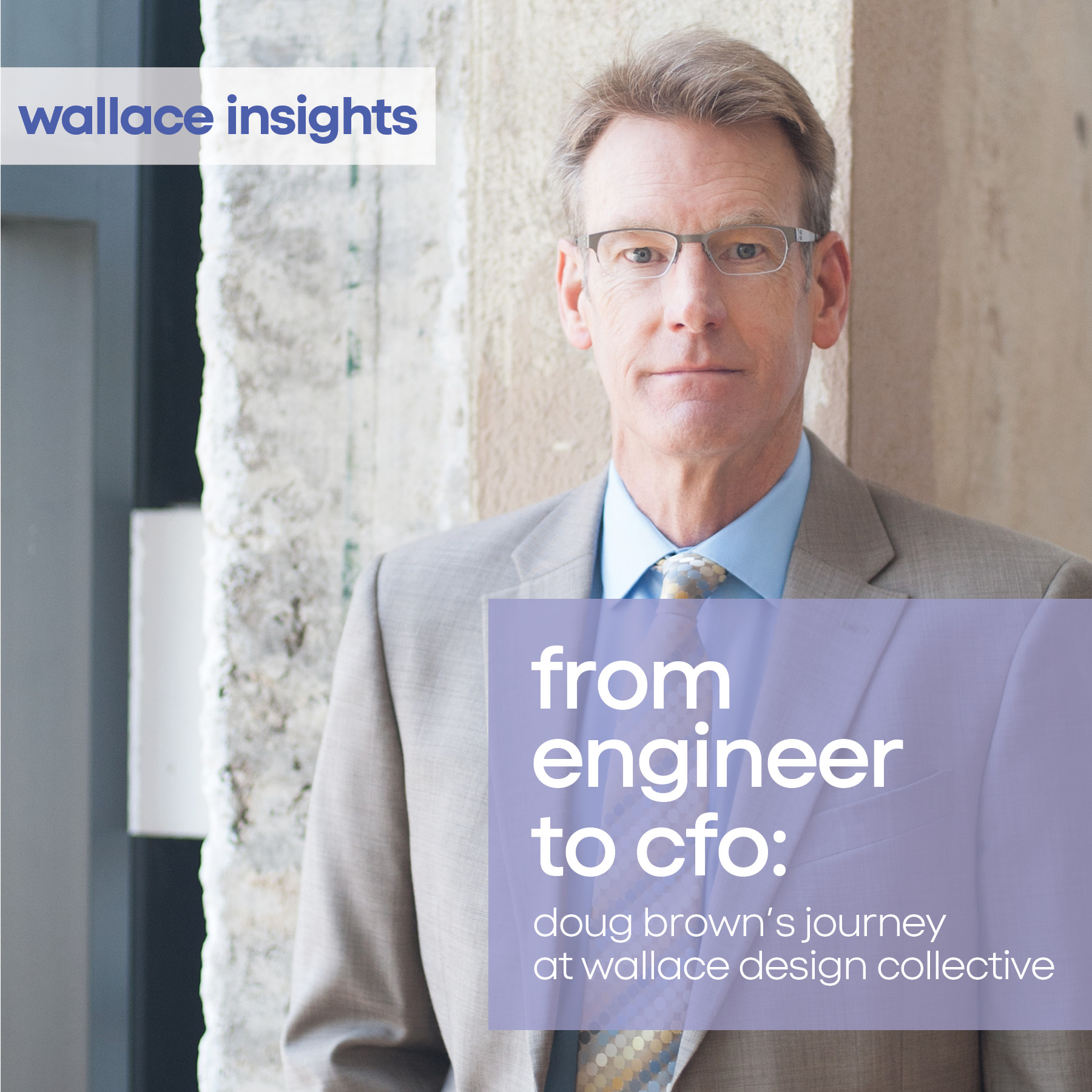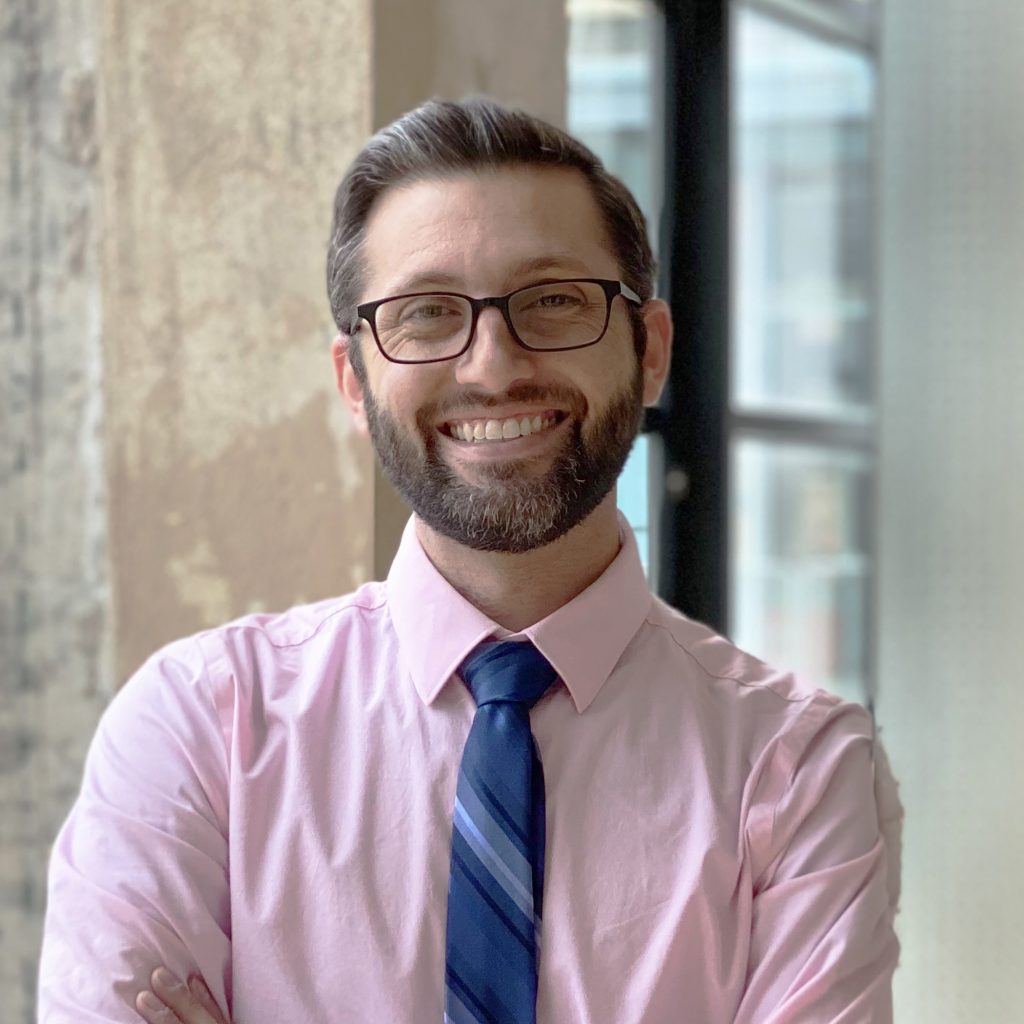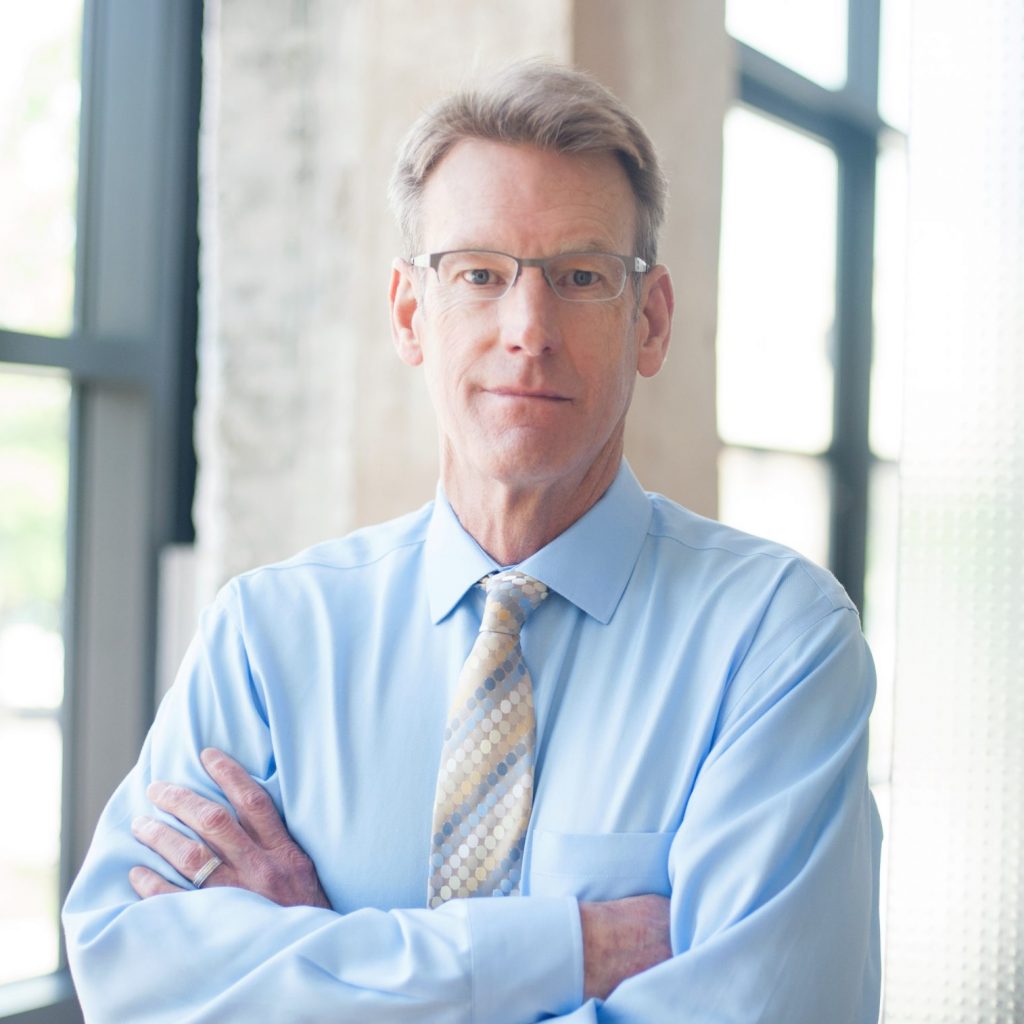
Brad Thurman, PE, FSMPS, CPSM
Principal
As Chief Marketing Officer, Brad directs marketing and business development for Wallace. He received his Bachelor of Science in Architectural Studies and Master of Architectural…
View Profile
For this month’s blog, Associate Kyle Haskett sat down with our former Chief Financial Officer, Doug Brown, for a fascinating conversation about his career journey. From his early days at Wallace as a structural engineer to his successful transition into finance and eventual role as CFO, Doug shares invaluable insights, advice, and stories that offer a unique perspective on the world of finance within the AEC industry.
 Kyle: Doug, you’ve had an impressive career. After graduating from the University of Kansas in 1983 with degrees in architectural engineering and environmental design, you joined Wallace straight out of college as an intern engineer. By 1991, you had earned your place as a Principal and soon after transitioned into the finance side of the business. For the last 33 years, you’ve been critical in overseeing our firm’s financials, ensuring Wallace Design Collective’s stability. You’ve served as CFO for the past 16 years, and earlier this year, you were recognized as one of the ‘Top 10 Chief Financial Officers’ at the 2024 OnCon Icon Awards.
Kyle: Doug, you’ve had an impressive career. After graduating from the University of Kansas in 1983 with degrees in architectural engineering and environmental design, you joined Wallace straight out of college as an intern engineer. By 1991, you had earned your place as a Principal and soon after transitioned into the finance side of the business. For the last 33 years, you’ve been critical in overseeing our firm’s financials, ensuring Wallace Design Collective’s stability. You’ve served as CFO for the past 16 years, and earlier this year, you were recognized as one of the ‘Top 10 Chief Financial Officers’ at the 2024 OnCon Icon Awards.
We’ve been fortunate to have you with us for the past 41 years. Let’s start by asking: What made you choose Wallace all those years ago?
 Doug: “Well, it wasn’t what I intended to do, I’ll tell you that. My family had been in architecture in Tulsa, and I didn’t want to come back here. I wanted to go somewhere else. I tried to interview in Denver, Kansas City, and Dallas, but it was 1983, and we were in a recession. The AEC industry was way down. So, I interviewed with Snowden Engineering, Inc. in Tulsa and Wallace. Both Snowden and Wallace offered me jobs. Snowden’s offer was higher, but my gut told me to go with Wallace, so that’s how my journey began here.”
Doug: “Well, it wasn’t what I intended to do, I’ll tell you that. My family had been in architecture in Tulsa, and I didn’t want to come back here. I wanted to go somewhere else. I tried to interview in Denver, Kansas City, and Dallas, but it was 1983, and we were in a recession. The AEC industry was way down. So, I interviewed with Snowden Engineering, Inc. in Tulsa and Wallace. Both Snowden and Wallace offered me jobs. Snowden’s offer was higher, but my gut told me to go with Wallace, so that’s how my journey began here.”
“I was employee number five, and we were Wallace Engineering – Structural Consultants at the time. We weren’t incorporated until 1988. On my first day, we moved from the Wright Building in downtown Tulsa to 21 Center Park, at 21st Street and Columbia. We had one filing cabinet, a copy machine, a blueprint machine, somewhat of a library, and one computer.”
You became a Principal just eight years after joining Wallace in 1991. What do you think contributed to your quick rise within the company?
“I think it goes back to Tom Wallace recognizing the value he had in us. I was one of five principals named that year, alongside Tom Gangel, Ken Basden, Brad Thurman, and Paul Rose, all structural engineers. At the time, Tom Wallace was still in his late 30s, but he recognized that if he lost us, we could compete with him. We were growing at the time. Walmart had become one of our clients, and we implemented all the processes to produce the buildings they wanted efficiently. At one point, we were doing about 300 buildings a year for them. So, I credit Tom for recognizing the value that the five of us brought to him.”
Your background is in architectural engineering and environmental design, yet you transitioned into finance. What motivated the shift to finance, and how did you navigate the learning curve in such a different field?
“In my fifth year at the University of Kansas, I took a class called the Business of Architecture and Engineering. It was taught by a gentleman who was a licensed architect, a registered professional engineer and had his own practice in Kansas City. During the course, we went through the complete AIA contract. He had us design a project for him. We had to present it to him, then we had to bill him for it, and then we had to collect it. I was fascinated by that whole process.”
“When I came to work for Tom in 1983, I told him I had an interest in finances and that someday I’d like to get involved in that part of the business. So, in 1991, when I became a principal, it started with just signing paychecks. From there, it grew to reviewing financial statements, sending them to the principals, and sending out the accounts receivable reports so people knew what they had outstanding. So, it was a very slow process. But if you think about an accountant and an engineer, they’re both left-brain analytical people. The conversion from engineering to finance was relatively easy for me in the sense that, you know, I’m not dealing with moment and shear on a beam anymore. I’m dealing with income and expenses. And I have to pay credit to Dena Dye, who’s retired now. She was instrumental in helping me understand the financial statements in and of themselves: assets, liabilities, net worth, revenue, expense, and so forth.”
What made you decide to stay all these years?
“Well, honestly, I almost left in 2003. I was considering doing something different, but then Tom Wallace bought the building where we are headquartered today. And having been involved in the execution of all our other offices over the course of my tenure in the finance world, I knew Tom would need help with this. So I decided to go ahead and stay. And it was later, in 2008, that I was actually named the CFO. If I hadn’t stayed, I wouldn’t have been chosen for that.”
You’ve overseen the financial health of the firm for the past 33 years. What has been the most rewarding part of this role?
“I just became aware of this within the last couple of years, but honestly, it’s the amount of trust and respect that the principals and employees have in me. I was told that during one of my performance evaluations, and I just really didn’t know that. That was probably one of the most rewarding things, that so much trust was placed in me.”
What about challenges? Isn’t this challenging?
“Back in 1993, BSW Architects was our largest client. We had 103 employees, and they generated 97% of our work. Well, that fall, they told us they wanted us to merge with them or they would take all the work away. So all the principals at the time – Tom Wallace, Tom Gangel, Ken Basden, Paul Rose, Brad Thurman, Charley Wall, Brian Walker, Tom Hendrick, Carrie Johnson, Gene Phillips and I – met at Tom Wallace’s house one night. We sat around for six or seven hours and talked about what we wanted to do. After a lot of discussion, we decided that we wanted to remain autonomous and stay consultants as long as we could. We called BSW Principal David Broach that night. He came over to Tom’s house, and we told him the news, and he said that’s too bad. Over the next two and a half years, our revenue decreased by 60%, and our staff size dropped down to 50. However, during that time, we opened an Irvine, California, office, our Kansas City office was born, and we began growing our civil engineering practice, diversifying our services. But had we not made that decision that night in October of 1993, Wallace Design Collective would not exist as it does today.”
Pretty incredible. I can’t imagine what that conversation was like and how difficult that must have been.
“It was. We were scared to death. We didn’t know what else to do. Tulsa didn’t have many architectural firms back then. But the thing is, our relationship with BSW led to so much more. Narrate Design, formerly Selser Schaefer, SGA, The McIntosh Group, and others – were all started by people we worked with at BSW. And thankfully, those relationships continue today. The more I’ve grown in my career, the more I realize that nurturing relationships is essential for business success.”
When you took over as CFO, what were your key goals for the role, and how did you work toward achieving them?
“I wanted to create an operations analysis – a way for us to judge our performance against ourselves and our peers. You can know how much revenue and profit you’re generating, but how does that compare with our competitors, engineering sub-consultants, firms of the same size, etc.? So, over time, I developed a one-sheet document that would give the principals seven years of history, and the most recent year would be benchmarked against the PSMJ financial performance survey. Using that document, the shareholders can look at how we’re doing and what revenue we generate per full-time equivalent. We can even drill this down to the individual offices, disciplines, project types, and principals. David Thacker, our current CFO, has continued using that in the reporting format he’s given to the principals now.”
“The other thing was to always make sure we were solvent and that we could meet our obligations, payroll, expenses, and so forth. I’m really happy to say the only year we ever lost money was 1996, three years after we made the decision to remain consultants.”
As the CFO of a growing engineering firm – now a multi-disciplinary design collective – what were some of the unique challenges you faced, and how did you overcome them?
“I would say the last four years have presented some of the most unique challenges I’ve ever faced, starting with the pandemic. Then, we had Howell & Vancuren join us in 2021 to add landscape architecture services. We were also renovating the civil engineering area of our headquarters, and then we started conversations with KSi Structural Engineers, Inc., and Bennett Surveying about acquiring them. So, we had all those going on almost simultaneously and overlapping to some degree. That created a lot of challenges for me. But we made it through, and the thing about it is, we were smart enough to recognize that we needed to get outside consultants to help us do this. So we made wise, solid decisions with good information. Based on what’s happened over the last four years, it’s really set Wallace up for the future.”
You were recently named one of the ‘Top 10 Chief Financial Officers’ at the 2024 OnCon Icon Awards. How does this recognition reflect on your journey and the work of the Wallace team as a whole?
“I think it is a great way to show that through good financial performance, we’re making lives better for our employees. That is front and center of my ethos and how I look at things. And I always approach things from that standpoint: will this make it better? So, yeah, I was totally surprised to be recognized and chosen by peers for this award. It tells me that my peers had a lot of trust and respect for the job that I had done. I like to think of it as a really nice bookend on my career.”
You’ve recently passed the title of CFO to David Thacker. What was the process of selecting your successor like?
“It was a challenge. We hired someone to be my replacement in mid-2022, and when she departed in March of 2023, I didn’t know where we would go from there. Dena had already retired, so we started the interview process. It took several months, and we reviewed several candidates before finding David. But when we met him, we had a real connection with him right away, and the cool part was that he had industry experience. He’d been with Cowen Construction for 10 years and served as their CFO for two. The other cool thing about it was that his father was an engineer, and he had always wanted to be an engineer when he grew up. So we knew right then and there that this was the right guy.”
“We brought David on in July 2023, and I started working with him immediately. He’s been doing the reporting to the shareholders for 2024, the entire year. We kept the process the same so they’re seeing things the way they have always seen them. I also think he’s going to bring an additional skill set to the role of CFO that I didn’t have because he’s a CPA.”
What advice or words of wisdom would you offer David as he steps into the role of CFO?
“I always tell him to be thinking ahead. Know what’s coming, whether it’s good or bad. It’s also important to have a clear end goal yet be flexible enough to adjust your path as needed. He’s a sharp guy, and I believe that where you start doesn’t matter as much as where you end up.”
Looking ahead, what are your plans after scaling back your time at Wallace? What are you most looking forward to in retirement?
“Well, you may find this interesting, but I actually hired a retirement coach. I worked with him starting in May and he introduced a concept I hadn’t considered before: in retirement, you suddenly have 2,080 hours a year that were formerly committed to something else. The challenge is figuring out how to fill that time meaningfully. I’m still in the process of figuring out what that’s going to be exactly. Yet, I can tell you this: it’s going to involve making lives better, and I’m going to do it with responsiveness, flexibility, quality, and creativity because those core values are ingrained in me forever.”

Are you passionate about the AEC industry? Do you want to use your talents with a group of the greatest engineers, landscape architects, technicians and support personnel in the industry? You've found the right place. Wallace is unique in the way we strive to make lives better for our clients, communities and employees. And we believe we have more fun doing our job than just about anyone else! The art of possibility. Discover it at Wallace.
Learn More
There are no comments.